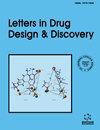基于配体的高密度脂蛋白受体 SR-BI 抑制剂分子模型,作为强效抗高血脂药物
IF 1.6
4区 医学
Q4 CHEMISTRY, MEDICINAL
引用次数: 0
摘要
导言高密度脂蛋白(HDL)受体、清道夫受体 B 类 I 型(SRBI)在脂蛋白代谢、胆固醇稳态和动脉粥样硬化中发挥着至关重要的作用。本研究对 31 种新型吲哚啉基噻唑类 SR-BI 介导脂质摄取抑制剂的数据集进行了定量结构-活性关系研究(QSAR)。方法:为建立 QSAR 模型,进行了多元线性回归分析(MLR)、偏最小二乘法分析(PLS)和神经分析(NN),并进一步进行了内部和外部活性预测评估。选出的 MLR 最佳 QSAR 模型的相关系数 (r2) 为 0.937,交叉验证 r2cv 为 0.908,标准误差 (S) 值为 0.253。对于 PLS,r2 为 0.937,对于 FFNN,r2 为 0.961(训练集)。通过测试集进一步进行外部评估,其 r2 值分别为 0.870(MLR)、0.863(PLS)和 0.933(神经网络)。结果::最终模型包括疏水参数(Lipole Z 成分)和立体参数(摩尔折射率和 K alpha2 指数)。结论所有这些描述符都产生了相似的结果,证明所生成的模型是合理的,具有良好的可预测性。本文章由计算机程序翻译,如有差异,请以英文原文为准。
Ligand-based Molecular Modeling of HDL Receptor SR-BI Inhibitors As Potent Anti-Hyperlipidemic Agents
Introduction:: The High-density lipoprotein (HDL) receptor, Scavenger receptor class B, type I (SRBI) plays a crucial role in lipoprotein metabolism, cholesterol homeostasis, and atherosclerosis. In the present study, a quantitative structure-activity relationship study (QSAR) investigation was conducted on a data set of 31 novel indolinyl thiazole-based inhibitors of SR-BI mediated lipid uptake. Method:: To build the QSAR model, Multiple linear regression analysis (MLR), partial least square analysis (PLS), and neural analysis (NN) were performed which were further evaluated internally as well as externally for the prediction of activity. The best QSAR model for MLR was selected with a correlation coefficient (r2) of 0.937, cross-validation r2cv of 0.908, and a standard error (S) value of 0.253. For PLS, r2 was 0.937 and for FFNN r2 was 0.961 (for the training set). This was further evaluated externally by a test set having r2 values 0.870 (MLR), 0.863(PLS), and 0.933(neural network) analysis. Result:: The final model comprised hydrophobic parameters (Lipole Z component) and steric parameters (molar refractivity and K alpha2 index). Conclusion:: All these descriptors generated comparable results which prove that the model generated is sound and has good predictability.
求助全文
通过发布文献求助,成功后即可免费获取论文全文。
去求助
来源期刊
CiteScore
1.80
自引率
10.00%
发文量
245
审稿时长
3 months
期刊介绍:
Aims & Scope
Letters in Drug Design & Discovery publishes letters, mini-reviews, highlights and guest edited thematic issues in all areas of rational drug design and discovery including medicinal chemistry, in-silico drug design, combinatorial chemistry, high-throughput screening, drug targets, and structure-activity relationships. The emphasis is on publishing quality papers very rapidly by taking full advantage of latest Internet technology for both submission and review of manuscripts. The online journal is an essential reading to all pharmaceutical scientists involved in research in drug design and discovery.

 求助内容:
求助内容: 应助结果提醒方式:
应助结果提醒方式:


